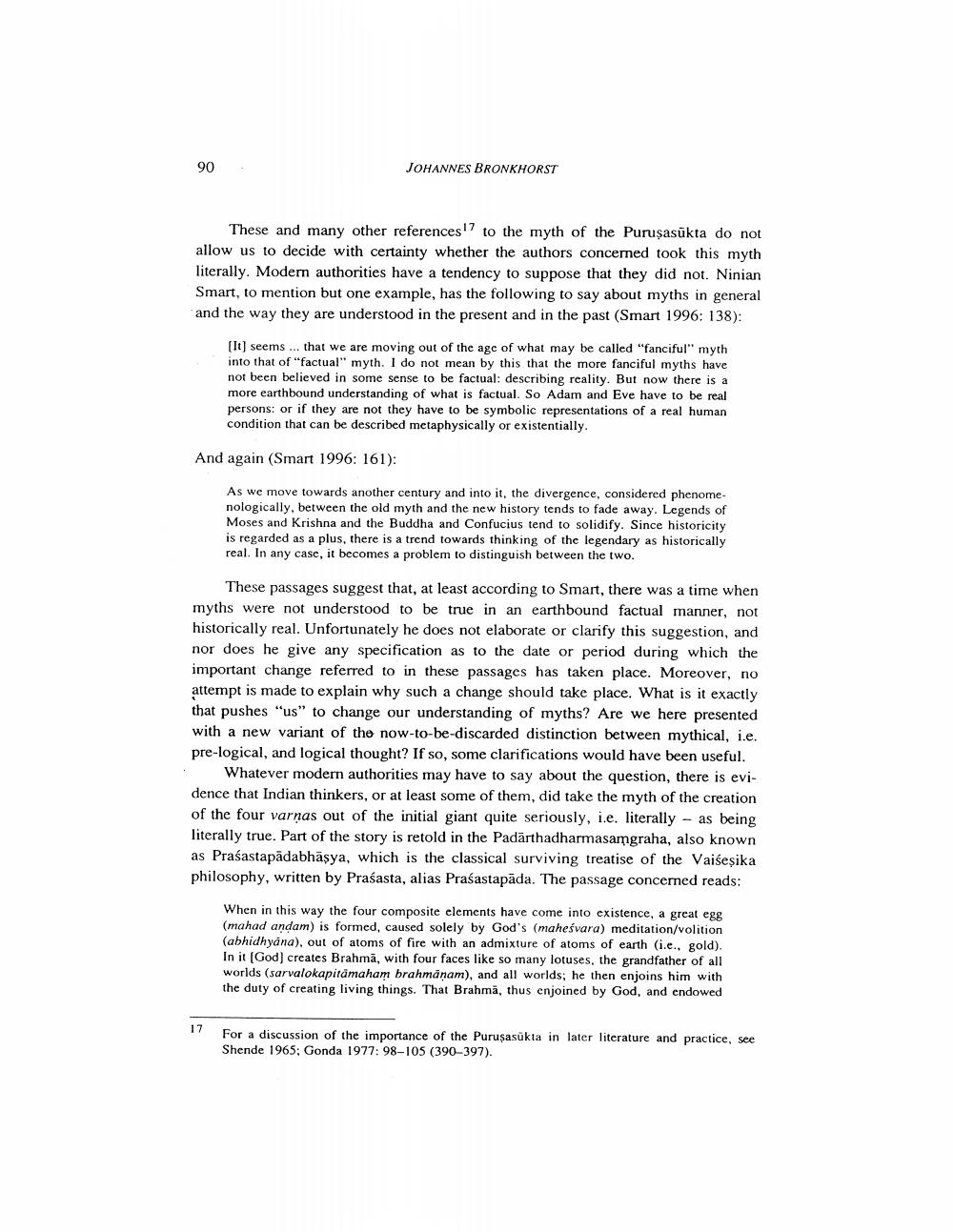________________
90
-
JOHANNES BRONKHORST
These and many other references!? to the myth of the Purusasūkta do not allow us to decide with certainty whether the authors concerned took this myth literally. Modern authorities have a tendency to suppose that they did not. Ninian Smart, to mention but one example, has the following to say about myths in general and the way they are understood in the present and in the past (Smart 1996: 138):
[1t) seems ... that we are moving out of the age of what may be called "fanciful" myth into that of "factual" myth. I do not mean by this that the more fanciful myths have not been believed in some sense to be factual: describing reality. But now there is a more earthbound understanding of what is factual. So Adam and Eve have to be real persons: or if they are not they have to be symbolic representations of a real human condition that can be described metaphysically or existentially.
And again (Smart 1996: 161):
As we move towards another century and into it, the divergence, considered phenomenologically, between the old myth and the new history tends to fade away. Legends of Moses and Krishna and the Buddha and Confucius tend to solidify. Since historicity is regarded as a plus, there is a trend towards thinking of the legendary as historically real. In any case, it becomes a problem to distinguish between the two.
These passages suggest that, at least according to Smart, there was a time when myths were not understood to be true in an earthbound factual manner, not historically real. Unfortunately he does not elaborate or clarify this suggestion, and nor does he give any specification as to the date or period during which the important change referred to in these passages has taken place. Moreover, no attempt is made to explain why such a change should take place. What is it exactly that pushes "us" to change our understanding of myths? Are we here presented with a new variant of the now-to-be-discarded distinction between mythical, i.e. pre-logical, and logical thought? If so, some clarifications would have been useful.
Whatever modern authorities may have to say about the question, there is evidence that Indian thinkers, or at least some of them, did take the myth of the creation of the four varnas out of the initial giant quite seriously, i.e. literally -- as being literally true. Part of the story is retold in the Padārthadharmasamgraha, also known as Praśastapädabhāsya, which is the classical surviving treatise of the Vaišeşika philosophy, written by Praśasta, alias Prasastapāda. The passage concerned reads:
When in this way the four composite elements have come into existence, a great egg (mahad andam) is formed, caused solely by God's (maheśvara) meditation/volition (abhidhyāna), out of atoms of fire with an admixture of atoms of earth (i.e., gold). In it (God) creates Brahmā, with four faces like so many lotuses, the grandfather of all worlds (sarvalokapitámaham brahmanam), and all worlds; he then enjoins him with the duty of creating living things. That Brahma, thus enjoined by God, and endowed
17
For a discussion of the importance of the Purusasükta in later literature and practice, see Shende 1965; Gonda 1977: 98-105 (390–397).




